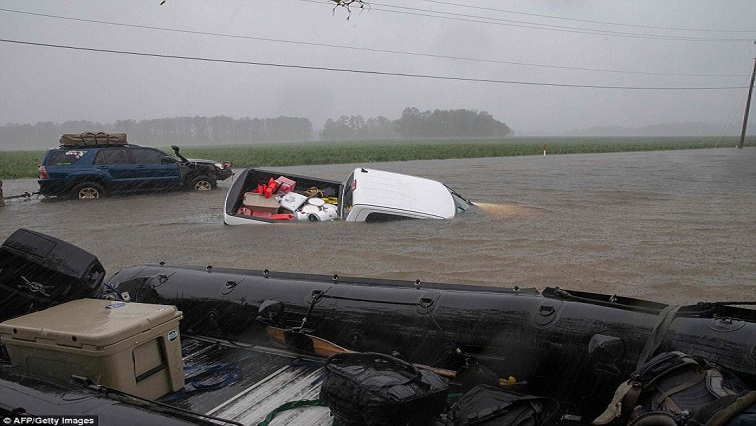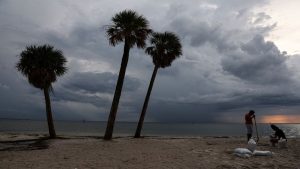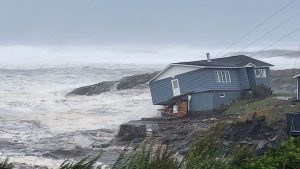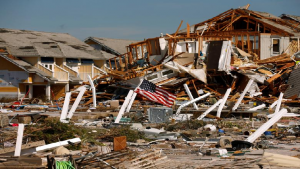Catastrophic floods raised the threat of dam breaks and landslides across the Carolinas Sunday, prolonging the agony caused by a killer hurricane that has left more than a dozen dead and billions of dollars in damage in the south-eastern United States.
Downgraded to a tropical depression, Florence slowly crawled over South and North Carolina, dumping heavy rains on already flood-swollen river basins that authorities warned could bring more death and destruction.
Local media have tallied 13 deaths since Florence made landfall Friday as a Category 1 hurricane over Myrtle Beach, South Carolina.
“Unfortunately we’ve still got several days to go,” Brock Long, administrator of the Federal Emergency Management Agency, told Fox News.
Long said more havoc lays ahead as the storm broadens its geographic scope over regions deeply saturated with water.
Of particular concern were the risks to dams, already stressed by heavy rainfall from a tropical storm earlier in the month.
“That water has got to come down and make its way to the coast and it’s traveling south. So the rivers are pretty saturated which exacerbates this problem. What we have to focus on are there any dams that are going potentially going to break.”
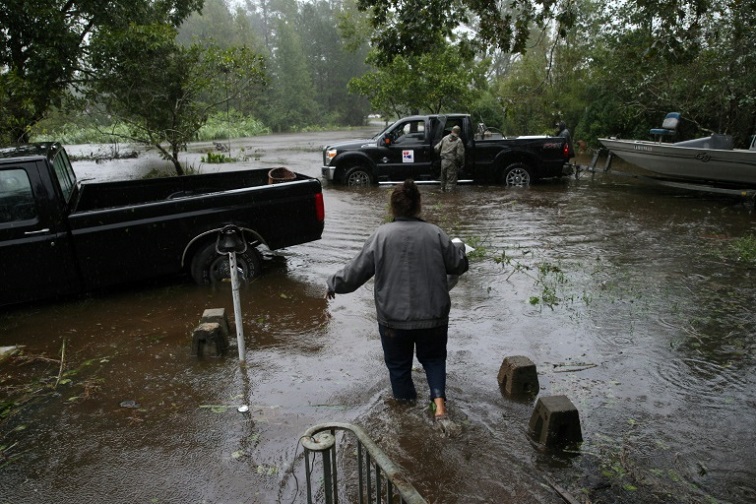
He urged citizens to remain vigilant and heed official’s warnings, adding that Florence had now turned into a “flood event.”
“People fail to heed warnings and get out or they get into the flood waters trying to escape their home. And that’s where you start to see deaths escalate,” he told CBS News.
“Even though hurricanes are categorized by wind it’s the water that really causes the most loss of life.”
A woman and her baby were among the storm’s first casualties when a tree fell on their house.
Others killed included three who perished “due to flash flooding and swift water on roadways,” according to the Duplin County Sheriff’s Office, and a 61-year-old woman who died when her car hit a downed tree.
At least two people died from electrocution while attempting to connect their generators while one couple died of monoxide poisoning from running their generator indoors, according to reports.
Even as some residents began returning to their homes, officials warned a long road to recovery ahead.
“I think that the storm is likely going to produce impacts greater than Hurricane Matthew,” Senator Thom Tillis of North Carolina said on Fox News, referring to a Category 5 storm that struck in 2016.
“The agriculture industry, the largest industry in our state is hard-hit. We will have to sort out the crop damage,” he continued, adding: “I think that it’s fair to say in terms of economic impact rebuilding that we are talking in the billions of dollars.”
A dull, leaden sky was hanging over the town of Grifton, North Carolina on Sunday morning. Days of heavy rainfall have turned the surrounding farmland into soggy marshland.
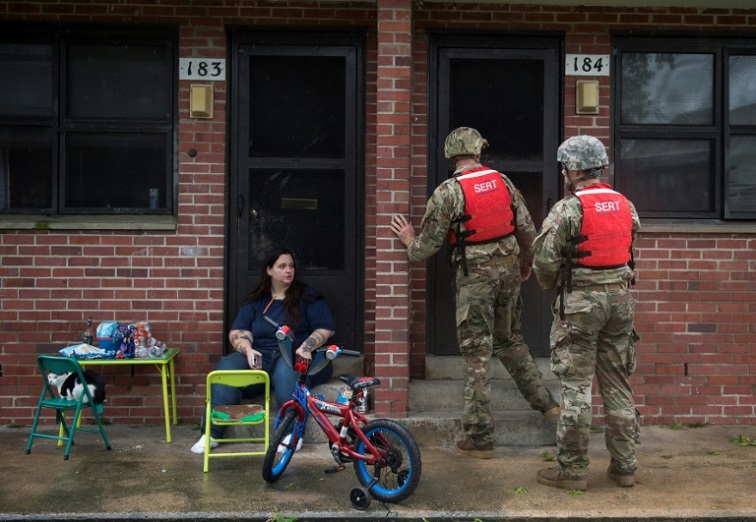
Localised flooding persisted in some areas; with Grifton fire chief Justin Johnson warning of more deluges in the days ahead.
“People who need to be evacuated have been evacuated. We continue to patrol the area, but people have already been through Matthew hurricane and know what to expect,” he told AFP.
The number of customers without power across North Carolina fell slightly to 700,000. Thousands meanwhile were being housed in 157 shelters across the state.
US Coast Guard Commandant Admiral Karl Schultz meanwhile told ABC 28 aircraft had been deployed as well as 35 “shallow water rescue teams.”
The army previously announced it was deploying nearly 200 soldiers to assist in storm response and recovery efforts, along with 100 trucks and equipment.
Besides federal and state emergency crews, rescuers were being helped by volunteers from the “Cajun Navy” — civilians equipped with light boats, canoes and air mattresses — who also turned up in Houston during Hurricane Harvey to carry out water rescues.


